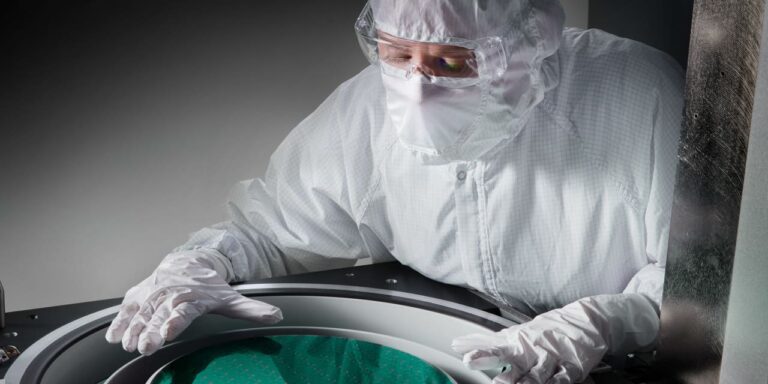
[ad_1]
Text size

Chipotle, Draftkings, Lam Research and eight other stocks may be underappreciated by investors, according to a screen run by Citi analysts.
Courtesy of Lam Research
Growth stocks have dropped of late, and many that aren’t in the Big Tech group look like decent bets at this point.
The
Russell 1000 Growth
Index, comprised of fast-growing companies including Big Tech mainstays such as
Microsoft
(ticker: MSFT) and
Nvidia
(NVDA), is down about 6% from its peak for the year, hit in late July. Still, it seems like a breather. The index still sports a year-to-date gain of 24%, lifted by investor enthusiasm for artificial intelligence, and analysts raising earnings estimates.
Another factor in the recent drop in growth stocks is higher bond yields. The 10-year Treasury yield has been on the rise recently, which makes future profits less valuable. Growth companies—tech-focused or not—are valued on the basis that most of their profits won’t come for years.
Some growth names now look highly attractive, especially if yields stop rising. That would help valuations—stocks’ multiples of expected profits for the next year—stabilize. If they do, higher profits over time would bring these stocks upward.
Still, a prudent investor wants to avoid overvalued stocks under most circumstances.
That’s why Citi strategists screened for growth stocks that have become the most attractive during the recent pullback. They looked for stocks that are down more than 10% from their highs for the year, and companies that covering analysts have raised free-cash-flow estimates for since the end of March. The companies also have to have free-cash-flow estimates for five years from now above where their market capitalizations imply they will be. That could indicate that investors are underappreciating a company’s potential to generate cash flow.
Picks from the screen include
Paycom Software
(PAYC),
MongoDB
(MDB),
ROK
),
Las Vegas Sands
(LVS),
Bruker
(BRKR),
DraftKings
(DKNG), and
Lockheed Martin
(LMT).
Lam Research
(LRCX), which makes equipment for chip makers, also turned up. The stock is down 14% from its high for the year. Free-cash-flow estimates are up almost 24% since the end of March. Wall Street is upbeat because chip makers will need to buy more equipment to produce more chips to power artificial intelligence needs in the cloud business.
With cash-flow estimates up for the next year, and the stock down, Lam Research shares are much less expensive now. The stock trades at 22 times forward free cash flow, down from a peak this year of about 35 times. At the higher multiple, it was about 50% more expensive than the
S&P 500’s
free-cash-flow multiple, but now it only trades at a 5% premium.
Another find is
Pinterest
(PINS), a Barron’s stock pick this year. Shares of the social-media platform are down about 12% from the high for the year, but free-cash-flow estimates are up about 0.4% from the end of March. Advertising spending has slowed, but Pinterest said at a September investor day that as it increases monetization of users abroad, sales can grow close to 20% a year and expand profit margins, leading to high bottom-line growth.
Pinterest stock now trades at about 22 times free cash flow, down from the multiple’s high of 40 this year.
Intuitive Surgical
stock (ISRG) is down 18% from its high for the year, a move that partly reflects concern that new weight-loss drugs will reduce the number of bariatric surgeries people want. But the company said on its second-quarter earnings call that those surgeries represent a very low percentage of its total revenue. That’s partly why free-cash flow estimates have edged 0.5% higher since the end of March.
The stock trades at 45 times free cash flow, down from a peak this year of about 63 times.
Chipotle Mexican Grill
stock (CMG) is down about 13% from its peak for the year. Free-cash-flow estimates are up about 8% since the end of March.
The quick-service-restaurant chain has beaten profit forecasts in the past two quarters. Analysts continue to expect low-teens sales growth annually to over $14 billion by 2026, according to FactSet, as the company adds stores and customers by selling digitally and tweaking menu offerings. That should help power higher profit margins, and lift earnings per share by 22% a year to $79.72 by 2026. Free-cash-flow estimates aren’t established beyond the next couple of years.
But Chipotle stock now trades at 45 times free cash flow for the next year, down from a peak of 51 this year.
Give these stocks a shot.
Write to Jacob Sonenshine at [email protected]
[ad_2]